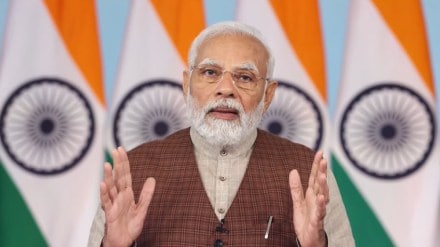Prime Minister Narendra Modi on Saturday said infrastructure development, which is the driving force of the economy, will help India become a developed nation by 2047.
Addressing a post-Budget webinar on ‘Infrastructure and Investment: Improving logistic efficiency with PM Gatishakti National Master Plan’, Modi said the government’s capex has increased five times compared to 2013-14 (FY14) and the government was moving with a target of investingRs 110 trillion under the National Infrastructure Pipeline (NIP). The Centre’s capex is estimated to reach a recordRs 10 trillion in FY24 compared with Rs 1.88 trillion in FY14. The Modi government came to power at the Centre in May 2014 (FY15).
Following growth in recent years, India is now a lower middle-income country with average prosperity levels at $2,000 ($7,150 at purchasing power parity). As per the World Bank’s definition, a country with a per capita annual income of over $12,000 is considered a higher-income nation.
The PM Gati Shakti digital platform, launched in October 2021, aims to provide multimodal connectivity infrastructure to various economic zones by bringing together 16 ministries, including railways and roads, for integrated planning and coordinated implementation of projects in cooperation with the state governments.
The programme intends to prioritise all mega infrastructure connectivity targets by FY25, the terminal year of the ambitious NIP in six years through FY25.
NIP represents overall investments in the sector by the Centre, states and private sector. It envisages more than doubling the scale of investments compared with aroundRs 50 trillion invested over the FY14-FY19 period.
The PM said the average construction of national highways has nearly doubled compared to what it was before 2014. Similarly, only 600 km of railway track was electrified per year before 2014, which is now almost 4,000 km per year. He added that the number of airports and seaport capacity have also doubled. “Now, we have to improve our speed and move in top gear,” he added.
Modi noted that results of the PM Gati Shakti are becoming visible. “We have identified the gaps that were impacting the logistics efficiency.” That is why, he said, in this year’s Budget, 100 critical projects have been prioritised andRs 75,000 crore have been allocated, includingRs 15,000 crore from private sources. These projects are for last and first-mile connectivity for ports, coal, steel, fertiliser, and foodgrain sectors.
“With quality and multimodal infrastructure, our logistics cost is going to reduce further in the days to come. This will positively impact the goods made in India and the competence of our products. Along with the logistics sector, there will be a lot of improvement in ease of living and ease of doing business,” he said, inviting participation of the private sector.
Modi asked participants to develop a mechanism for an advanced forecast of the needs of their respective sectors. “We need an integrated approach so that the roadmap for the future remains clear. The PM Gati Shakti National Master Plan has a big role in this,” he said, emphasising the need to integrate the concept of circular economy with the sector.
